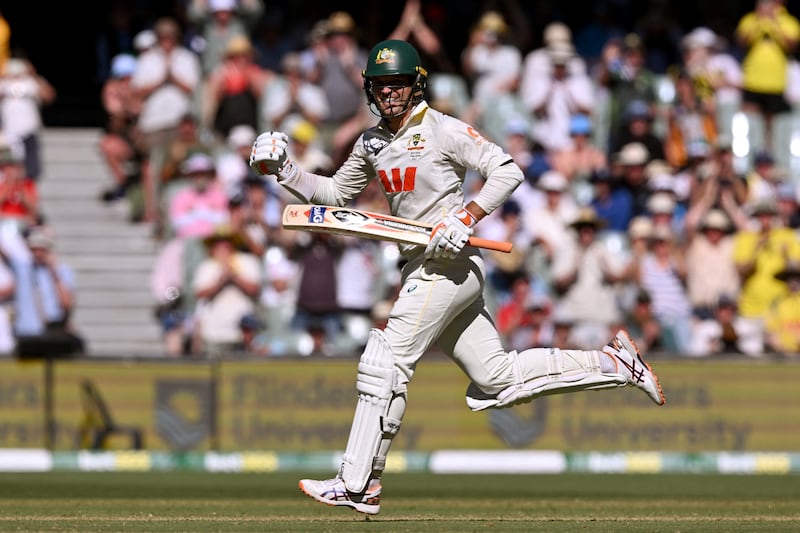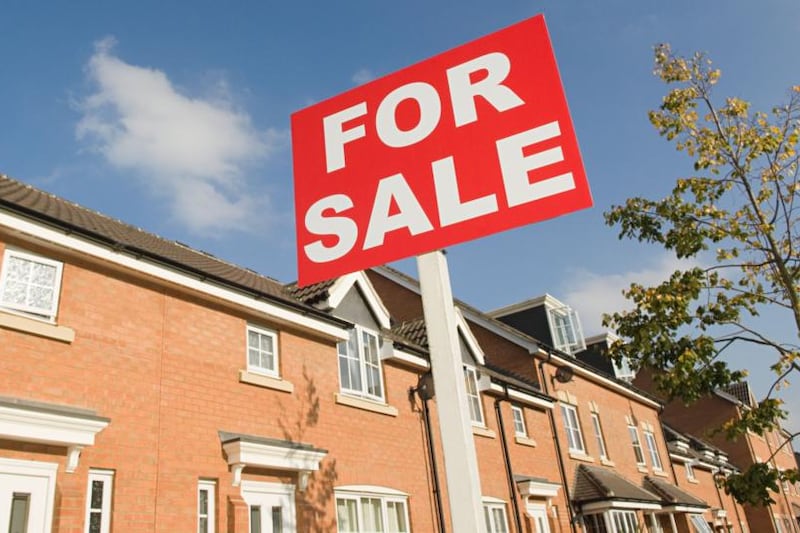Sinn Féin says it will abolish it if elected while a Department of Finance report concluded that it should be withdrawn “when the timing is right”. Despite this, the recent budget extended the Help to Buy scheme until 2025.
But has it achieved what it was supposed to do so, and is Help to Buy, which aims to boost housing supply by helping first-time buyers fund a deposit through a rebate of taxes paid, now simply costing too much? Some eight years since it was first introduced, we take a look at how the scheme operates.
It costs a lot
When launched, it was expected that Help to Buy would cost €40 million a year. With an initially planned expiration date of December 2019, the expectation was that it would cost the exchequer about €130 million in total.
However, it has worked out considerably more expensive. First of all, more first-time buyers than expected have availed of it; there were fewer than 10,000 applications in 2018; by last year, claims reached a record high with some 28,000 applications as of November.
RM Block
Moreover, the average claim has increased, partly due to the increase in the value of the rebate to €30,000 in 2020, as well as an overall increase in house prices. In 2018, the average claim was €14,753 but this had risen by close to 80 per cent to €26,338 by 2022.
Back in 2022, Revenue put a costing of some €740.8 million on the scheme over the period from 2016 to 2022. This would indicate an average annual cost of the order of about €105 million – substantially more than the original €40 million a year.

Poorly targeted
As a review of the scheme commissioned by the Department of Finance noted, the scheme is “poorly targeted with respect to incomes, location, house prices and other socioeconomic factors”. The main issue in this respect is that the scheme would seem to support those who could have bought a home anyway – irrespective of whether they got the Help to Buy rebate or not.
This is evidenced by the relatively low loan-to-value (LTVs) – the amount someone has to borrow as a percentage of the overall purchase price – of Help to Buy applicants.
If Help to Buy was truly helping those who otherwise couldn’t buy, one would expect a preponderance of LTVs at around the 90 per cent level, with Help to Buy providing the 10 per cent deposit.
While the scheme does have a minimum LTV of 70 per cent, which was put in place to avoid “deadweight loss”, or transactions that would have taken place even if the scheme wasn’t in place – and which also rules out cash buyers from the scheme – this level may be pitched at too low a level.
Over the 11 months to November 2023, out of a total of 6,821 claims, some 1,478 – or more than a fifth, at 22 per cent – had deposits of almost 30 per cent, as they had a LTV of between 70 and 75 per cent.
This cohort could have likely funded their house purchase without Help to Buy as they had almost three times the required 10 per cent deposit. The caveat here is that putting more money down may have helped them qualify for the required mortgage on the multiples of earnings permitted by lenders, as they will have needed to borrow less.
[ State schemes fanning house price inflationOpens in new window ]
Only 31 per cent of buyers had a LTV of 90 per cent or more, meaning they most likely would not have had a chance of buying without the Help to Buy tax rebate to fund their deposit.
In order to better target the scheme, the Department of Finance report recommended that the minimum mortgage LTV should be increased to 80 per cent for applications to the scheme after the end of 2022. However, this was not done.
Another factor here is the average price paid for a new home. The number of claimants who are purchasing homes at prices above the market average was cited in an Oireachtas report on Help to Buy, published in 2022, as one reason that the scheme is poorly targeted.
According to the Central Statistics Office, the median national house price stood at €320,000 in September 2023; but 88 per cent of claims were for properties valued at in excess of €300,000, while more than one in five were for homes valued at more than €450,000. There were fewer than 1,000 claims for properties valued at or below €300,000.
Inflating prices
A frequent criticism of such demand-based incentives is that all they ultimately achieve is an increase in property prices.
In England, for example, a report on a similar scheme, which has cost about £29 billion, found that its help-to-buy scheme pushed up house prices and failed to “provide good value for money”. The House of Lords report said the money would have been better spent on increasing housing supply.
If you take a look at the prices paid by claimants in the scheme, there is a definite trend towards properties at the higher end of the €500,000 ceiling
But what about Ireland?
The Department of Finance report notes that there is no “definitive evidence” that the scheme has pushed up the price of new houses.
While new builds may have a “large and growing premium” over the price of existing houses, it notes that this existed before Help to Buy was introduced.
This is similar to the conclusion of Indecon’s 2017 report, which found there was “no evident impact” on overall prices of new homes for first-time buyers due to the scheme, citing the fact that the scheme was confined to a limited segment of the market as one factor behind this.
However, if you take a look at the prices paid by claimants in the scheme, there is a definite trend towards properties at the higher end of the €500,000 ceiling. In the 11 months to November 2023, for example, more than a fifth of properties were in the €450,000+ category. Does this mean developers are pitching prices close to the upper range of eligibility? And without the scheme, would they be priced at a lower level?
This was noted in the Department of Finance report, which found that such a peak “had an impact on pricing at the upper end of the new home market, with a far larger number of houses priced at a level that would just qualify for assistance than the general distribution of house prices might imply”.
Impact on supply
The supply of new homes has increased since the scheme was introduced – there were 21,098 new homes built in 2019, but Goodbody’s forecast for output for 2023 is 32,093. But how much of this increase is down to Help to Buy?
As the 2022 Oireachtas report indicated: “There is no clear method which could show the number of additional units arising from the Help to Buy scheme, as opposed to those which would have been delivered anyway.”
What is identifiable, however, is the proportion of claimants who get Help to Buy to build their own homes – homes which may be boosting supply but in a limited manner, as they are not helping increase the number of larger new developments.
The department report noted that more than three-quarters of the expenditure for self-builds is deadweight. And they account for a substantial proportion of applicants. Figures show that almost 10,000, or more than a quarter of the almost 38,000 claims made in the 2016-2022 period, were for self-builds.
And it’s increasing. In the 11 months to November 2023, 29 per cent of total claims came from people building their own homes, or having them built on a customised basis for them.
It could also be argued that the scheme hasn’t led to a significant increase in supply of new homes outside the main urban areas.
If you look at the claims by geographical location, unsurprisingly, Dublin is the most popular location, with almost 9,000 successful claims between 2016 and the end of 2022. It is followed by Cork, and the Dublin commuter counties Kildare, Meath and Wicklow.
What’s more surprising, perhaps, are the counties where it hasn’t been used much. Take Kilkenny, which has a population of about 100,000. It has had only 563 claims since the scheme was launched, or an average of 80 a year.
Or Carlow, which is in commuting distance of Dublin? It has had only 362 claims, or just about 52 a year. Leitrim has seen just 15 claims a year. And many of these homes are likely to be self-builds.
A cursory glance at Myhome.ie, for example, shows just one new development listed for sale in Limerick city, and two in Waterford city.
While there many reasons to change the scheme, doing so can be tricky, as noted in the Department of Finance review. Once introduced, “it can be difficult to remove schemes such as this once they have become part of the operation of the market”.
And industry wants the scheme enhanced even further. Pat Davitt, chief executive of the Institute of Professional Auctioneers and Valuers, recently called for the upper limit on tax refunds under the scheme to be extended to €40,000 on new properties for purchasers under the age 40. He also recommended the introduction of a new grant of €20,000 for first-time buyers aged under 40 and purchasing second-hand homes.
- Sign up for Business push alerts and have the best news, analysis and comment delivered directly to your phone
- Find The Irish Times on WhatsApp and stay up to date
- Our Inside Business podcast is published weekly – Find the latest episode here



















